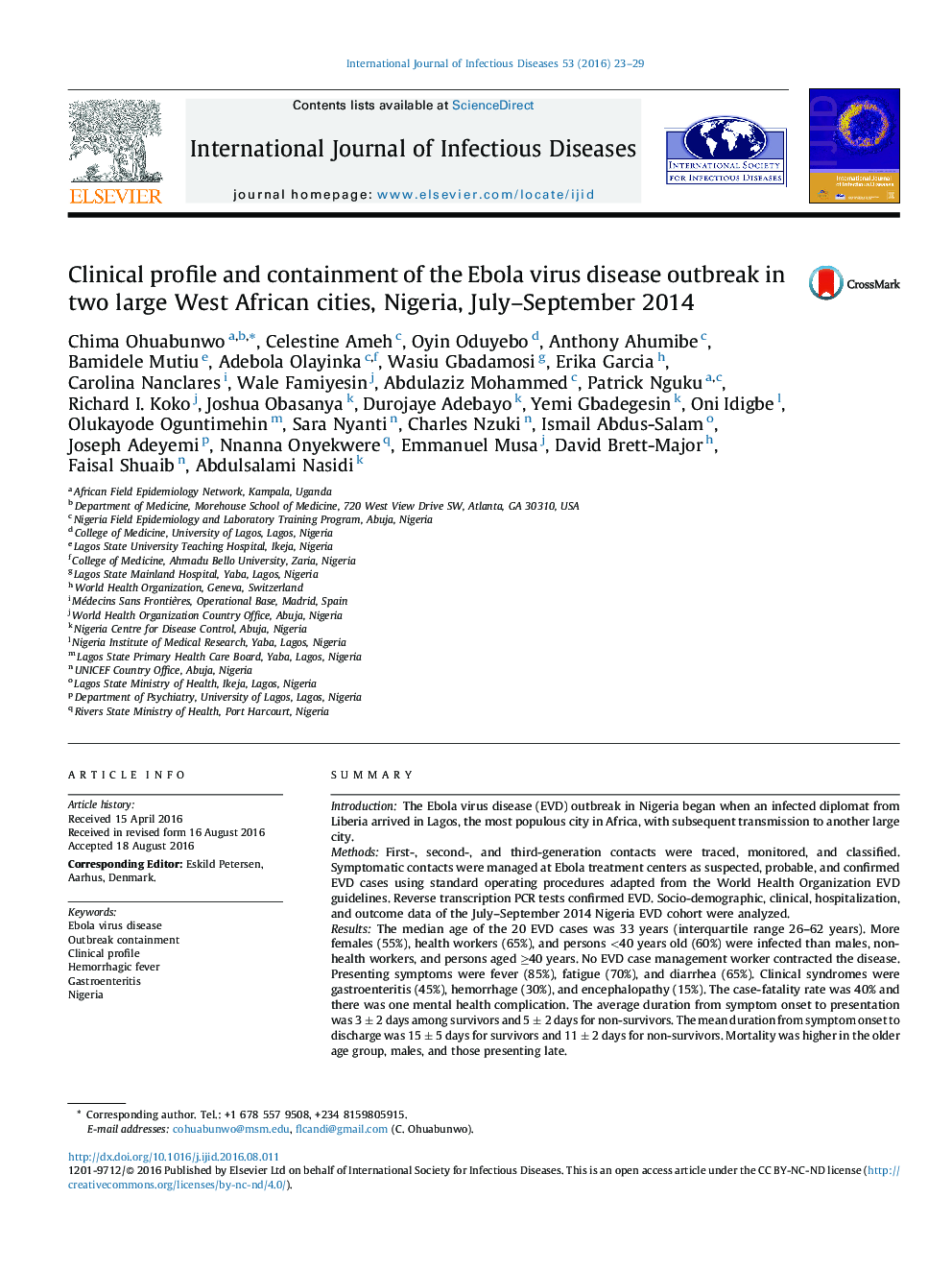| کد مقاله | کد نشریه | سال انتشار | مقاله انگلیسی | نسخه تمام متن |
|---|---|---|---|---|
| 5667339 | 1592040 | 2016 | 7 صفحه PDF | دانلود رایگان |

- The outbreak, mostly a severe febrile gastroenteritis syndrome (85% fever, 70% fatigue, 65% diarrhea, 50% vomiting), was in keeping with the West Africa Ebola virus disease pattern..
- It began in Africa's most populous city and spread to another large city, but involved only 20 cases, mostly females and health workers; no case management worker was infected.
- The case fatality rate was low at 40%.
- A higher mortality was seen in males, those in the older age group (â¥40 years), patients with diarrhea, vomiting, or bleeding, and those presenting late to the treatment center.
- Early case identification (survivors 3 ± 2 days, non-survivors 5 ± 2 days) due to effective contact tracing by epidemiologists/trainee epidemiologists, as well as prompt suspected case evaluation/isolation achieved containment within 2 months.
SummaryIntroductionThe Ebola virus disease (EVD) outbreak in Nigeria began when an infected diplomat from Liberia arrived in Lagos, the most populous city in Africa, with subsequent transmission to another large city.MethodsFirst-, second-, and third-generation contacts were traced, monitored, and classified. Symptomatic contacts were managed at Ebola treatment centers as suspected, probable, and confirmed EVD cases using standard operating procedures adapted from the World Health Organization EVD guidelines. Reverse transcription PCR tests confirmed EVD. Socio-demographic, clinical, hospitalization, and outcome data of the July-September 2014 Nigeria EVD cohort were analyzed.ResultsThe median age of the 20 EVD cases was 33 years (interquartile range 26-62 years). More females (55%), health workers (65%), and persons <40 years old (60%) were infected than males, non-health workers, and persons aged â¥40 years. No EVD case management worker contracted the disease. Presenting symptoms were fever (85%), fatigue (70%), and diarrhea (65%). Clinical syndromes were gastroenteritis (45%), hemorrhage (30%), and encephalopathy (15%). The case-fatality rate was 40% and there was one mental health complication. The average duration from symptom onset to presentation was 3 ± 2 days among survivors and 5 ± 2 days for non-survivors. The mean duration from symptom onset to discharge was 15 ± 5 days for survivors and 11 ± 2 days for non-survivors. Mortality was higher in the older age group, males, and those presenting late.ConclusionThe EVD outbreak in Nigeria was characterized by the severe febrile gastroenteritis syndrome typical of the West African outbreak, better outcomes, rapid containment, and no infection among EVD care-providers. Early case detection, an effective incident management system, and prompt case management with on-site mobilization and training of local professionals were key to the outcome.
Journal: International Journal of Infectious Diseases - Volume 53, December 2016, Pages 23-29